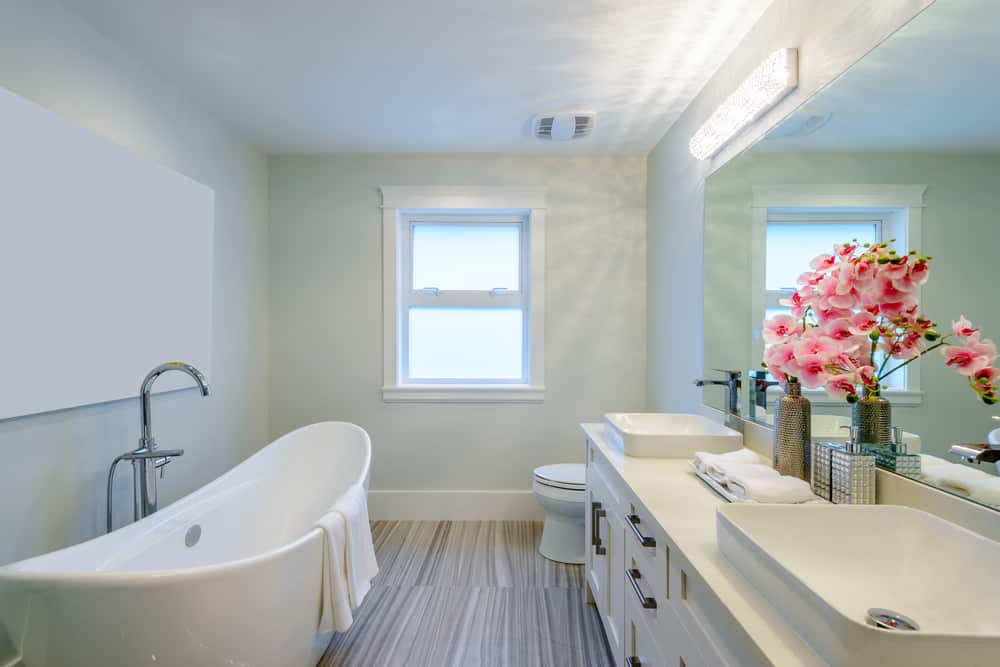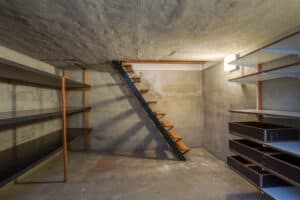
Making sure a home has proper ventilation, heating, and cooling is essential.
If you want to ensure that your home is comfortable at all times, you have to make sure that you can adjust the temperature.
When you think back to a time 100 years ago when temperatures were not adjustable the way they are today, it is hard to even understand what that must have been like.
One area of the home that people are often unsure of when it comes to heating and cooling is the bathroom.
If you have been wondering whether or not it makes sense to heat your bathroom, we have all the answers that you need.
Is A Heat Source Required In A Bathroom?

It is not required to have a heat source in your bathroom.
However, this is simply the code, but it is not always the recommended best practice.
If you are a homeowner who lives in a state where there are colder winter temperatures, the heat source is essential.
You will not want to step on cold tile floors into a cold tiled shower in the middle of the winter.
Luckily, there are some ways that you can add heat to your bathroom.
We highly recommend that northern homes have some type of heat source in the bathroom.
Without it, the bathroom just becomes uncomfortable.
Let’s take a look at some of the best ways to heat a bathroom.
Bathroom Heat Source Options

If your current home system does not have a heat source in the bathrooms, these are some of the options that you can look into.
If you are not sure whether or not these will work, it is a good idea to contact a local specialist who can help you.
Sometimes a plumber can be a great resource when it comes to bathroom heating choices.
They know how to handle issues in the bathroom, and they tend to have great solutions for those who are trying to warm their bathroom up a bit.
1. Bathroom Exhaust Fans With Heat Option
A bathroom exhaust fan is an intelligent choice to have in any bathroom.
With an exhaust fan, you can ensure that the moisture in the bathroom is kept to a minimum.
The last thing you want is for the bathroom to fill up with a bit too much moist and warm air.
This tends to lead to mold issues that will need to be dealt with.
Bathroom exhaust fans can come with a heating option on them.
This is an excellent choice for homeowners because the fan comes with the heater already installed in the fan.
You won’t have to go through any great troubles to get this process to work out, as the unit is sold as one piece.
There are separate controls for the heater and the exhaust fan.
This is a great option in the summer months when you want to use the fan, but you don’t need the heater on.
Overall, this is an affordable and smart choice for any bathroom.
2. Towel Radiator
The towel radiator can work with a smaller bathroom to ensure that there is some extra heat.
Our favorite thing, however, about the towel radiator is the way that it will warm your clothes and your towel.
In the winter months, it can be very uncomfortable to step out of the shower.
When you have a towel radiator in place, you can simply enjoy drying off with a warm towel followed by warm clothes to put on.
The towel radiator tends to emit extra heat that will spread into the bathroom as well.
Of course, the problem with this is that, for a larger bathroom, you won’t have nearly enough heat to keep you warm.
Think about combining the towel radiator with another heat source if you want a complete solution in your bathroom.
3. Electric Heaters
Electric heaters are portable small heaters that you can move from one room to the next.
The problem with an electric heater is that you have to be very careful about where you choose to place it in the bathroom.
Obviously, we know that electricity and water do not do all that well together.
This one of our least favorite options for heating a bathroom, but it is an option.
Sometimes to play it safe, you may want to put your electric heater just outside the door of the bathroom.
Some of the heat could end up in the bathroom, but you will lower the risk of having any sort of a problem.
Electric heaters also tend to take up space.
You should not need to worry about this space being taken up when there are other options for heaters for bathrooms that you could use instead.
4. Panel Heaters
A panel heater is similar to an electric heater.
However, a panel heater is placed on the wall most of the time.
The panel heaters are a bit smaller in size, and they are certainly better designed for a room the size of the bathroom.
With a panel heater, you won’t have to worry about stepping over a unit on the floor.
In addition, many of these are designed specifically for bathrooms, and therefore, the safety issues seem to be few and far between.
The panel heater is also quite a bit nicer to look at than some of the other options.
You can usually get these to blend in pretty well with almost any bathroom decor.
If you have a large bathroom, you can consider adding more than one panel heater to the room.
Overall, this is an option that should be considered when looking to heat a large or a small bathroom.
5. Underfloor Heaters
Last but not least is an underfloor heater.
Many of these heaters are referred to as radiant heating in the floor.
You can essentially install pipes under your bathroom floors that are connected to the heating system in your home.
Many people use this in both bathrooms and kitchens.
If you have never experienced radiant heat on the floor of a home, it is really a unique and great experience.
If you don’t like getting out of bed and stepping on a cold tile, you will really enjoy how radiant heat works.
This is a large project and will require a much bigger investment.
If you are building a bathroom or have decided to do a significant renovation, this is the time to consider radiant heating.
If, however, you are simply a little chilly in your bathroom, you will likely have to use another method to heat the room.
The underfloor heating system typically will add a bit more money to your electric bill as well.
Since the heaters are tied into the systems that run through your home, they will add to your total energy costs.
For some people, this is worth it, but for others, the ability to heat the floors may be a bit excessive at times.
What Is The Best Way To Heat A Bathroom?

As you can see, there are quite a few ways to heat a bathroom.
You will have to choose something that works for your budget and your home.
For homes that have more than one bathroom, you may want to look into a solution that could potentially work for all the bathrooms in the house.
Although we enjoy the radiant heat under the flooring, the most economical and easiest way to add heat to your bathroom is through the exhaust fan with the heater.
This option is so simple, easy to install, and it is relatively affordable.
Because the heating unit and the exhaust fan will work on different circuits, the heat that you get can be controlled.
Having the ability to turn the heat on and off when you need it is a great option.
For those who are worried about the impact of the electric bill, these fans are quite efficient.
In fact, of all the heat sources that we have recommended for you, this one seems to be one of the most economical choices.
With something like radiant heat or even a panel heater, there is quite a bit of heat that does not get used or is lost in the bathroom.
With the exhaust fan heater, this won’t be as much of a concern.
Conclusion
Hopefully, you feel as though you now have some options for adding heat to your bathroom.
A bathroom that does not have heat can be very uncomfortable.
Although the building code may not require you to have a heat source in your bathroom, a great builder will ensure that you are warm and comfortable in your bathroom.
For those who live in warmer climates, the bathroom heater does not seem to be as much of a necessity.
However, on a snowy morning when it’s time to get up for work, you will be hoping that you have some type of heat source in the bathroom.
Choose something that works with the design of your home and with the overall budget you have for this project.









It is not required to have a heat source in a bathroom, but it can be beneficial for comfort and preventing moisture buildup. Adding a heat source such as a bathroom heater or heated towel rail can help to keep the room warm and dry.